We’ve all been there – accidentally getting Aquaphor, a popular ointment, on our clothes. Whether it’s from applying it to dry skin, treating a minor cut, or soothing chapped lips, this product can leave a pesky residue on the fabric. Fear not, for I have the solution to get Aquaphor out of clothes effectively, without causing damage to your favorite garments.
It’s essential to address the issue as soon as possible, as this will result in the best possible outcome. The longer the Aquaphor settles on your clothes, the harder it will be to remove. To save your clothes from stubborn stains, I’ll be sharing some tried-and-true methods that you can follow to tackle the problem swiftly and efficiently.
As you read on, you’ll find multiple techniques suitable for different fabric types, ensuring you have the right approach for the job. By following these step-by-step processes, you’ll be able to REMOVE Aquaphor from your clothes successfully and restore them to their original state. So let’s get those stains out and make your clothes look as good as new!
Contents
To effectively get Aquaphor out of clothes, it’s essential to first understand its composition. Aquaphor is a widely popular skin care product, primarily utilized for moisturizing and healing skin conditions such as dryness and minor cuts. As a petroleum-based ointment, its unique formulation comprises several key ingredients. These include:
By understanding the benefits and properties of these ingredients, I can provide the most effective cleaning solutions to remove Aquaphor from fabrics. Let’s dive into the essential components.
Petrolatum is the active ingredient in Aquaphor, consisting of 41% of the formulation. It acts as an effective skin protectant by creating a barrier, preventing moisture loss, and promoting healing. However, petrolatum’s greasy nature makes it challenging to remove from clothes without the right techniques.
Mineral oil is a common addition to skin care products. It works as an emollient, softening and smoothing the skin, while also trapping moisture. Despite its benefits for skin care, mineral oil can also leave oily stains on clothes.
Ceresin is a waxy substance originating from minerals. It adds thickness and consistency to the ointment, making it more spreadable. While ceresin doesn’t pose staining issues like petrolatum or mineral oil, its waxy texture contributes to Aquaphor’s overall difficulty to remove.
Lanolin alcohol is derived from sheep’s wool and serves as a gentle emulsifier, allowing different ingredients to mix uniformly. It isn’t as problematic as other ingredients but can still contribute to the toughness of the stain.
Panthenol, glycerin, and bisabolol are additional ingredients that enhance the ointment’s skin-healing properties. Panthenol is a derivative of vitamin B5, used for moisturization and skin repair. Glycerin is a humectant that attracts moisture, while bisabolol is an anti-inflammatory compound obtained from chamomile.
In summary, the main ingredients responsible for staining clothes with Aquaphor are petrolatum, mineral oil, ceresin, and to lesser extents, lanolin alcohol. Knowing this composition allows me to establish the most efficient cleaning methods, which I will cover in the next sections of this article, ensuring you can get Aquaphor out of clothes with ease.
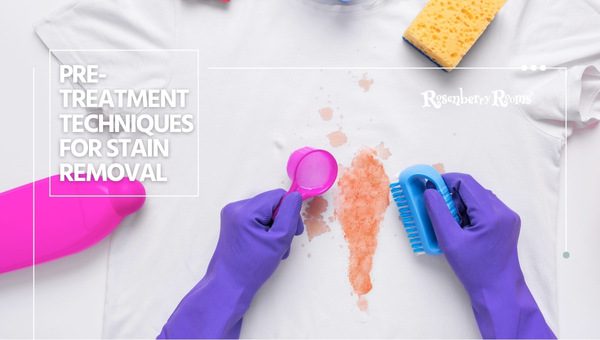
When it comes to getting Aquaphor out of clothes, pre-treatment techniques play an important role. In this section, I’ll share a few effective methods to help remove those stubborn stains. By following these steps, you’ll find it’s easier than ever to tackle the aftermath of any Aquaphor-related mishaps.
Begin by scraping off as much Aquaphor as possible from your clothing. You can use a dull knife, credit card, or even the edge of a spoon for this purpose. It is essential to remove the excess before continuing with the stain-removal process.
Once you’ve removed the excess Aquaphor, apply a stain pre-treatment solution to the affected area. There are a variety of pre-treatment options available, such as:
After pre-treating the stain, examine the clothing carefully. If the stain appears to be loosening, you can proceed with washing the garment according to its care instructions. Opt for the highest heat setting safe for the fabric, as heat can help break down the remaining Aquaphor. If the stain doesn’t appear to have budged, try repeating the pre-treatment process using a different method before washing.
If you still notice the stain after washing, don’t worry. Avoid the urge to dry your clothing, as high heat can set the stain permanently. Instead, try these additional pre-treatment techniques, and don’t forget to air-dry your clothes!
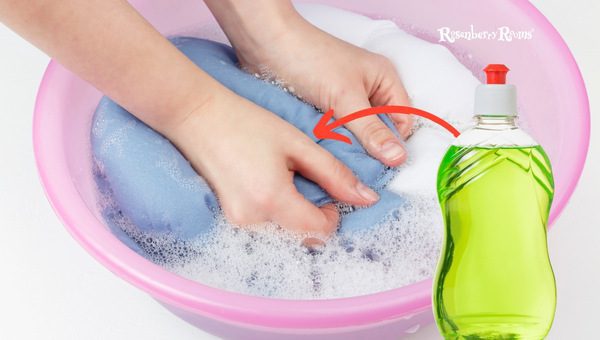
Accidentally getting Aquaphor on your clothes can be frustrating, but don’t worry. I’ve got a simple method to remove it – using dish soap and water. In this section, I’ll guide you through the process step by step.
First and foremost, promptly tackle the stain as soon as possible to increase your chances of effectively removing it. Here’s what you’ll need:
Now, let’s dive into the process:
Step 1: Remove excess Aquaphor from the fabric. Gently scrape off any excess ointment with a spoon or the edge of a credit card, being careful not to spread it further.
Step 2: Apply dish soap directly to the stain. Dish soaps are designed to cut through grease, so they’re great for tackling Aquaphor stains. Dab a small amount of dish soap onto the stain and gently massage it into the fabric using your fingers.
Step 3: Work the soap into the stain. Using an old toothbrush or a clean cloth, gently scrub the stain in a circular motion. This helps to break up the Aquaphor and lift it from the fabric. Be sure not to scrub too hard, as this can damage the fibres of your clothing.
Step 4: Rinse the stained area with cold water. After you’ve worked the soap into the stain and feel like it’s been sufficiently lifted, thoroughly rinse the area with cold water. Make sure all soap is removed from the fabric, as any residue left behind can attract dirt and create a new stain.
Step 5: Assess the stain. Check to see if the stain has been successfully removed. If it’s still visible, repeat steps 2-4 until the stain is no longer evident.
Step 6: Launder your clothing. Once the stain has been effectively treated, wash the garment according to its care label instructions. This final wash ensures all remnants of the stain and dish soap are removed.
Just remember, removing Aquaphor from your clothes may require a little patience and persistence. Don’t be discouraged if the stain doesn’t come out on your first attempt; just keep at it and soon enough, your clothing will be Aquaphor-free.
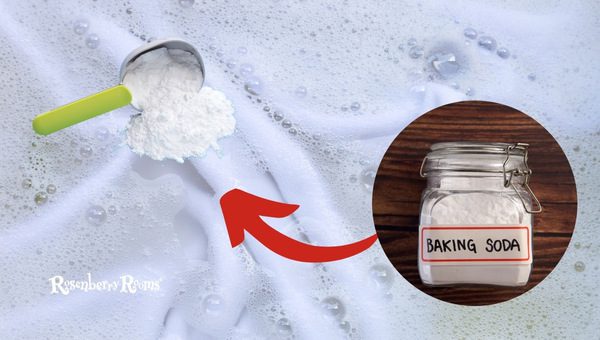
Baking soda is a versatile cleaning agent that’s gentle on fabrics and can be used to remove stubborn Aquaphor stains effectively. Here’s how I’m using baking soda to restore my clothes to their original state.
Remember that it’s essential to check the fabric type of your clothing before using baking soda. Baking soda is generally safe for most fabrics but can be too abrasive for delicate materials like silk or wool.
In summary, baking soda is a powerful cleaning tool that helps remove Aquaphor stains from various fabric types. All you need to do is follow the steps I mentioned above, and before you know it, your clothes will be Aquaphor-free.
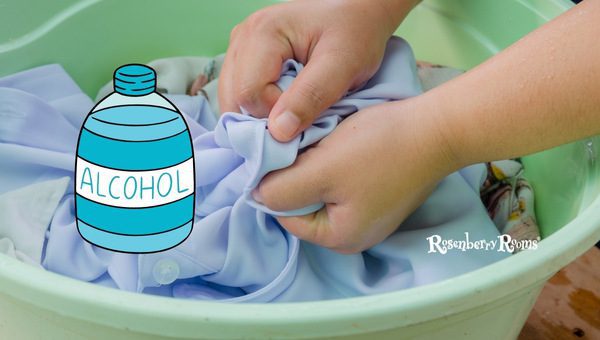
When it comes to getting Aquaphor out of clothes, rubbing alcohol can be a real lifesaver. It’s important to remember, though, that treating the stain as soon as possible will yield the best results. In this section, I’ll guide you through the process of using rubbing alcohol to remove Aquaphor from your clothes effectively.
Step 1: Test the fabric
Before you begin, it’s crucial to test the rubbing alcohol on a small, inconspicuous area of the fabric to ensure it doesn’t cause any discoloration or damage. Simply dab a small amount onto the fabric and let it sit for a few minutes. If there are no adverse reactions, you’re good to proceed with the following steps.
Step 2: Blot the stain
Using a clean, dry cloth, gently blot any excess Aquaphor from the surface of the fabric. Be careful not to rub the stain, as this may cause it to spread or become embedded deeper into the material.
Step 3: Apply rubbing alcohol
Next, pour some rubbing alcohol on a clean, white cloth or cotton ball. Gently dab the cloth onto the stained area, making sure to start on the edges and work your way inwards. This will help prevent the stain from spreading further.
Step 4: Monitor the progress
As the rubbing alcohol breaks down the Aquaphor, you should see the stain begin to lift. Continue applying more alcohol and blotting as needed until the stain is gone. Remember to be patient – this process may take some time.
Step 5: Launder your clothes
After the Aquaphor stain has been completely removed, launder your clothing as usual, following the manufacturer’s care instructions. This will help remove any lingering residue or odour from the rubbing alcohol.
Some important notes while using rubbing alcohol:
In summary, rubbing alcohol can be a highly effective and relatively inexpensive method for removing Aquaphor stains from your clothes. By following these simple steps, you’ll soon have your garments looking as good as new.
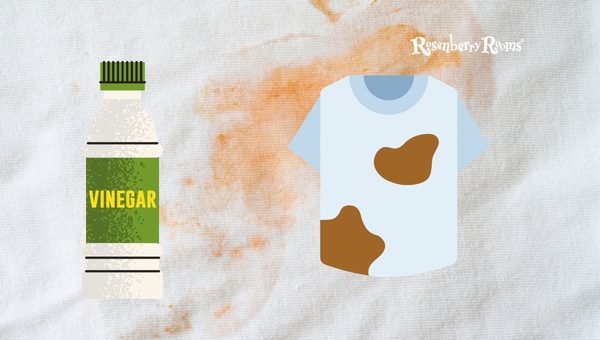
I’ve found that vinegar can be a great ally when it comes to removing Aquaphor from clothes. It’s a versatile and natural solution, which makes it perfect for a variety of cleaning tasks.
One of the key reasons vinegar works so well is its acetic acid content. This acid helps break down and dissolve the greasy residues left behind by products like Aquaphor. So, let’s take a look at how to use vinegar to effectively remove Aquaphor stains from your clothes.
First, it’s important to note that white distilled vinegar will give you the best results in this process. Start by mixing a solution of equal parts vinegar and water. This will dilute the vinegar to an appropriate strength for use on clothing. If you don’t have white distilled vinegar, you can also try using apple cider vinegar as an alternative.
With the vinegar solution ready, follow these steps to remove Aquaphor from your clothes:
Remember, vinegar is a natural solution that works well on a variety of fabrics. However, it’s always a good idea to test the vinegar solution on a small, inconspicuous area of the garment first to ensure it won’t cause any color bleeding or damage.
In addition to these steps, vinegar has some other benefits that can be useful in removing Aquaphor from clothes:
Taking advantage of vinegar as a cleaning solution can save you time and effort when faced with the challenge of removing Aquaphor from your clothes. Equipped with this information, you’ll have those pesky stains gone in no time.
There comes a time when Aquaphor removal needs more than a DIY solution. While I’ve already shared some effective methods that can help you save time and energy, it’s vital to recognize when it’s best to seek professional help.
Knowing when to turn to experts comes with experience. To make things easier for you, here are a few scenarios where you should consider hiring professional help:
To further emphasize when seeking help is crucial, let’s look at the table below:
| Situation | DIY Solution | Professional Help |
|---|---|---|
| Light staining | Yes | No |
| Extensive staining | No | Yes |
| Delicate fabrics | No | Yes |
| Expensive clothing | No | Yes |
There are numerous benefits of seeking professional help in removing Aquaphor from your clothes, which include:
Remember, tackling Aquaphor stains on your clothes may seem like a daunting task, but with the right knowledge and techniques in hand, it’s entirely possible to salvage your clothing items. And if the DIY approach doesn’t work, don’t hesitate to reach out to professional cleaners – they’re there to help!
Dealing with stubborn Aquaphor stains on your clothes can be a daunting task, but with the right information, it’s a problem that can be overcome. Acting quickly, testing new cleaning methods, and avoiding rubbing the stain are important steps to keep in mind.
Fortunately, there are several effective techniques available, including using dish soap and warm water, laundry detergents, and pre-treatments, as well as experimenting with cornstarch or baby powder. Persistence is the key to success when it comes to removing these types of stains, so don’t give up until you find a method that works best for your specific garment.
Remember to always check the care label on your clothes before trying any stain removal technique. With a little bit of patience and effort, you’ll be able to remove Aquaphor stains from your clothes and restore them to their original condition.